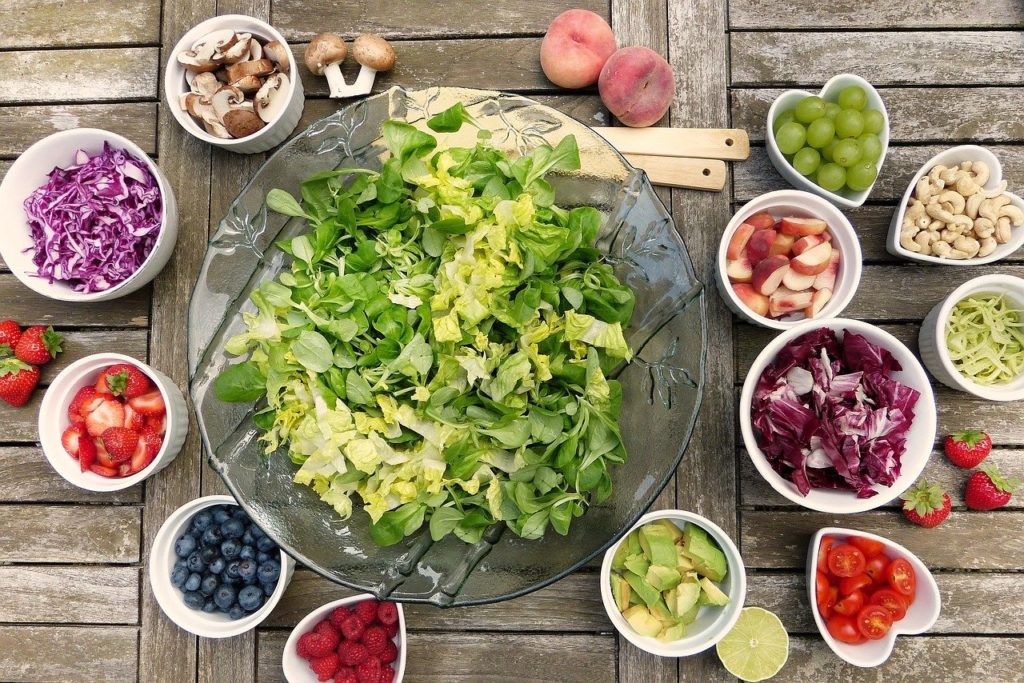When it comes to lose weight, dieting is an inescapable topic. But some of us may wandering if the dieting is a healthy way, since we want to be slim but also want to be healthy. So in this post, we will describe the difference between a healthy diet and dieting to lose weight.

What is a healthy diet
Healthy eating means that daily food intake should consist of foods that provide nutrients that the body needs to maintain its daily function . To make you feel good and have energy. The nutrients should include carbohydrates, protein, fat, water, vitamins and minerals.
Which foods are suitable for a healthy diet and which are not?
Suitable foods for a healthy diet:
Fruit and vegetables (freshly best, frozen food can also be used)
Legumes like lentils and beans
Grain products such as oats, spelled and rye
Milk and milk products with a low fat content such as natural yoghurt, milk and cheese
Dried fruit
Nuts such as almonds and walnuts (but in moderation due to their high calorie content)
vegetable products such as oat or almond milk and almond butter
Rather, these foods should be avoided:
heavily processed products such as ready meals
Products with a high salt and sugar content
fatty foods such as confectionery, chips and Co.
alcohol
What is the dieting to lose weight
Diet is the generic term for forms of nutrition that differ from normal nutrition in terms of their preparation, quantity and / or composition. Dieting to lose weight means that regulating one’s food intake for the purpose of losing weight.
What is the difference between a healthy diet and dieting to lose weight
The main difference is the purpose of food intake.Both of them are need to be healthy, need contain the nutriton that body need. When someone’s focus is healthy dieting, she/he eat meals with healthier options rather than unhealthy meals like junk food.
On the other hand, if someone aim to lose weight, she/he may keep track of calorie intake and follow recommended serving sizes.And choose the food and nutrients that only limits calories. They also cut back on portion size and eat less unhealthy foods.
Above is about the describe the difference between a healthy diet and dieting to lose weight. Hope that it will help you out of this issue.
Tips for Healthy diet to lose weight
1.Cook fresh, high in fiber, and high in protein
One of the best pieces of advice to lose weight in a healthy and sustainable way: cook for yourself! And as colorful, natural and varied as possible.
Vegetables and proteins should be on your daily menu from now on. Vegetables in any form, in particular, create volume and provide important fiber , vitamins and minerals.
Vegetable and animal proteins boost the metabolism rapidly and also keep you full longer. This is mainly due to the fact that the body has to use a lot more energy to break down proteins into amino acids.
Your body already burns calories during digestion. Almost a quarter of the nutritional energy of proteins dissipates without landing on your hips.
- Go for healthy fats
Daily food intake should consist of 30 percent healthy fats . With a height of 175 cm, a weight of 70 kilograms, at the age of 30 and a daily requirement of 2100 calories, this is around 70 grams of fat (630 calories) per day.
Fats control your hormonal balance and keep the hormones in balance.
Above all, testosterone production is promoted by healthy fats such as omega-3 . This in turn also has an enormously positive effect on muscle building.
When it comes to fat, it’s primarily about quality. We recommend foods such as avocados, almonds, almond butter , walnuts, linseed oil, olive oil, linseed, chia seeds and the high-fat fish salmon, mackerel, tuna and herring, all of which contain omega-3.
Avoid trans fats and too much of the saturated fatty acids that are found in sausage, fatty meat and cheese, butter and lard, palm and coconut fat, baked goods and sweets, for example. - Learn to eat intuitively
After you have acquired the knowledge about healthy foods and their energy density (calories), it is advisable to go a step further – try to intuitively listen to your feeling of hunger.
Are three meals, or rather five smaller meals spread out over the day, optimal? Warm food at lunchtime or more in the evening? You decide what is good for you.
The top rule: Eat when you are really hungry and, if necessary, question your previous habits. Are you hungry after getting up or is it more pleasant for you to have breakfast later? Does the piece of chocolate have to be after lunch or is it maybe a trained tic?
You can also feel your feeling of fullness: The best time to finish a meal is when there is a pleasant feeling of fullness – the stomach should not be tight and painful.
Learn to perceive the body’s signals correctly, because this is an essential part of losing weight and maintaining the desired weight in the long term.
